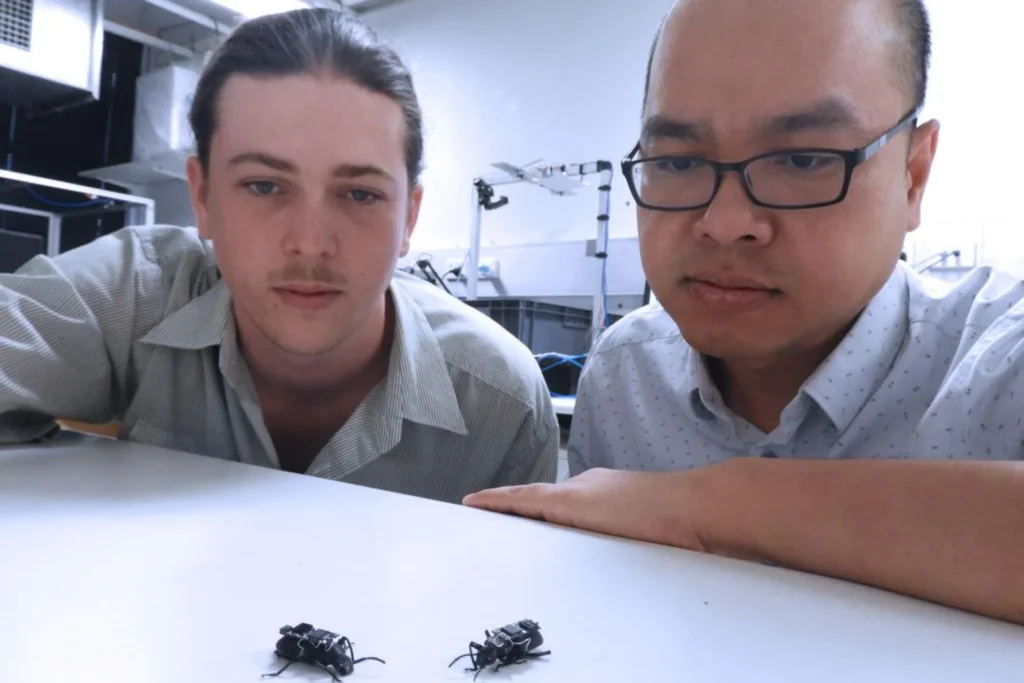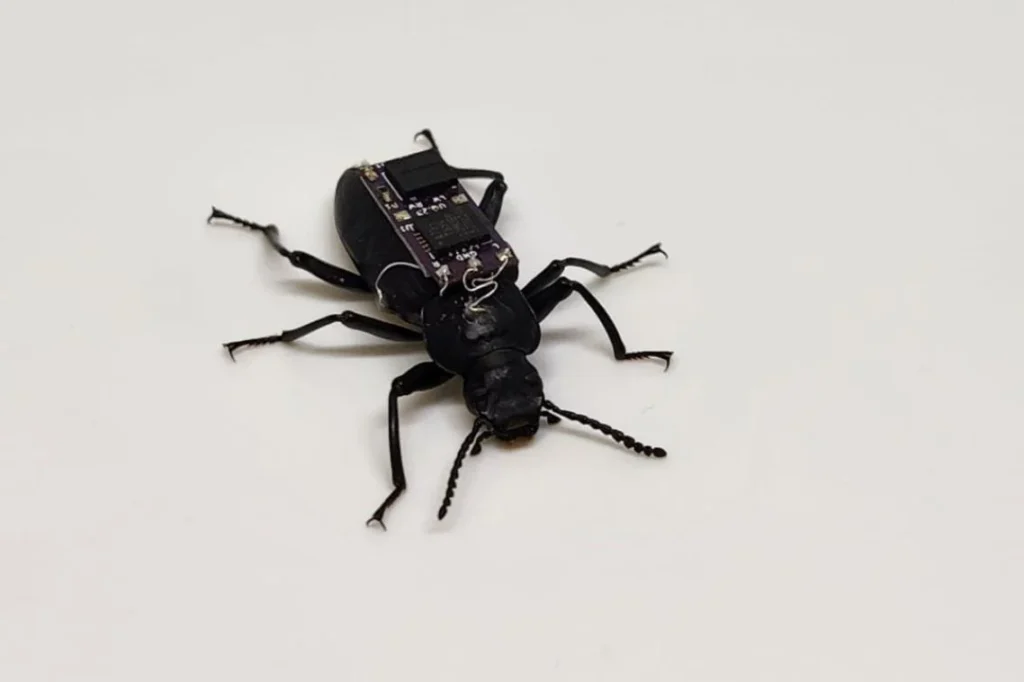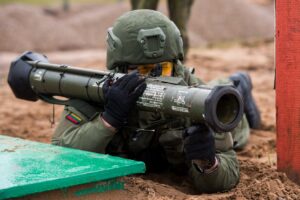Microchip-equipped beetles may sound like science fiction, but they are becoming real-world tools for disaster response. These cyborg insects combine biology with robotic control systems to navigate rubble, climb walls, and even deliver visual data from areas unreachable by traditional machines.
Researchers like Dr. T. Thang Vo-Doan and Mr. Lachlan Fitzgerald at the School of Mechanical and Mining Engineering are leading this breakthrough at the University of Queensland. Their goal? Their goal is to deploy beetles in real-world rescue missions within five years.

What Is a Cyborg Insect?
A cyborg insect is a living beetle enhanced with wearable electronics. Researchers attach a tiny “backpack” containing sensors and control modules. Electrodes stimulate specific body parts—like the antenna or elytra (wing covers)—to guide the beetle’s movement using remote controllers.
Unlike fully robotic drones, these beetles offer the advantage of natural locomotion, meaning they move through tight spaces, debris, and uneven surfaces with ease—perfect for chaotic disaster zones.
Why Beetles Are Better Than Robots in Rubble
Beetles, especially the Zophobas morio (darkling beetle), naturally climb, squeeze through gaps, and adjust to unstable environments. Small-scale robots often fail at vertical transitions or soft interactions, which beetles perform without effort.
The beetle’s onboard chip system doesn’t interfere with its lifespan. Researchers aim to expand its function to include visual sensors, audio capture, and even wireless communication for first responders. This research is also supported by the School of the Environment and international partners.
The Technology Behind Cyborg Beetles
The beetle’s control system includes:
- Electrode stimulation for direction control
- Video game-style remote interfaces
- Battery packs equivalent to beetle body mass
- Future additions: mini cameras, environmental sensors
These capabilities allow operators to guide the beetle into collapsed buildings or mines where human entry would be dangerous or impossible.

Ethical and Scientific Implications
As cyborg insects evolve, ethical considerations emerge. How do we balance innovation with animal welfare? Do these hybrids fall under robotics law or biological research ethics?
Still, the team envisions these beetles becoming life-saving tools that offer not just location data but real-time insight into injuries or environmental risks in disaster zones.
What’s Next for Cyborg Insects?
The long-term goal is a fully untethered, battery-powered beetle with onboard imaging and mapping capabilities. Researchers continue to test prototypes in increasingly complex environments.
If successful, the result will be a revolutionary rescue tool—beetles that crawl through collapsed buildings, capture footage, and return vital information within hours.
Frequently Asked Questions (FAQ)
What is a cyborg insect?
A living insect enhanced with electronic components that allow remote control or environmental sensing.
Are cyborg beetles real?
Yes. Researchers have successfully guided beetles using electrode stimulation and aim to add cameras and sensors.
Why not use drones instead of beetles?
Drones struggle in tight, unstable spaces. Beetles naturally excel at navigating complex environments without the need for mechanical limbs or stabilization systems.
Who is leading this research?
Dr. T. Thang Vo-Doan, Mr. Lachlan Fitzgerald, and their teams at the School of Mechanical and Mining Engineering are collaborating with the School of the Environment.
Conclusion
The fusion of biology and robotics is no longer theoretical. Thanks to innovators at the University of Queensland, cyborg insects may soon become an essential part of emergency response systems. What began in labs could soon be saving lives beneath rubble around the world.
Source: University of Queensland
Share this content:













Post Comment
You must be logged in to post a comment.